#Depicting: Mario Bros NES game box
Text
Animal Crossing - Part 3

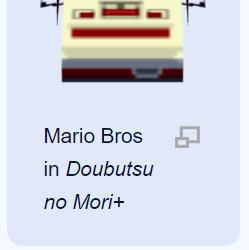


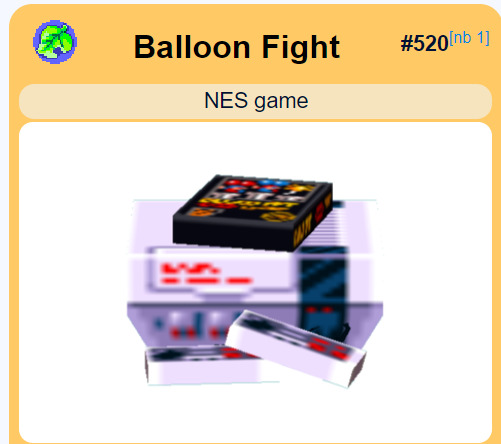
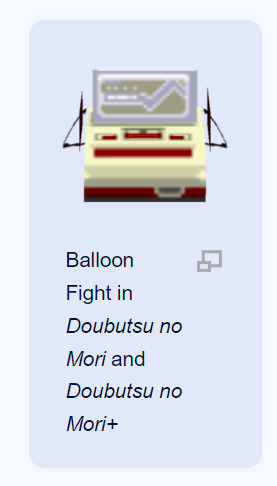
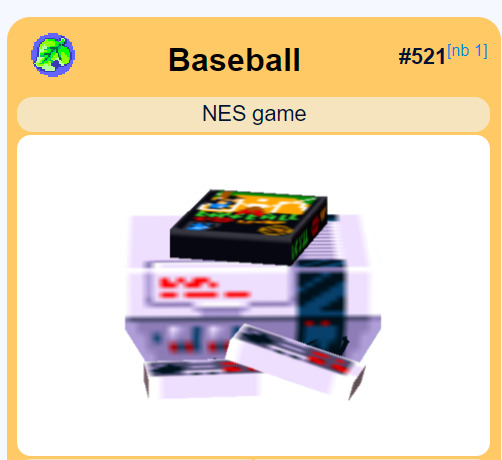
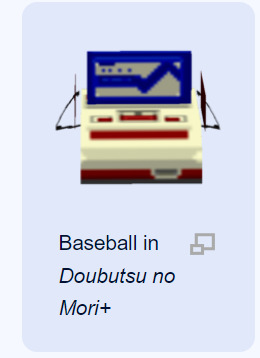
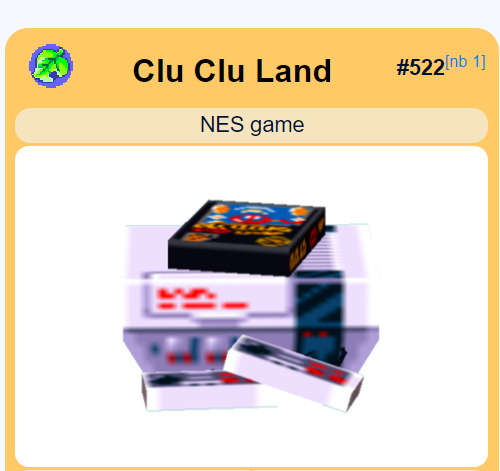

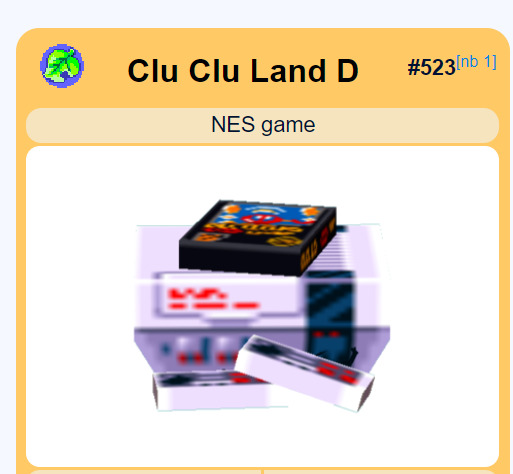


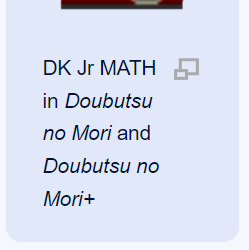


#Animal Crossing#Depicted by: Nintendo 64#Depicted by: Nintendo GameCube#Depicting: Mario Bros NES game box#Depicting: Mario Bros Famicom cartridge#Depicting: Ice Climber NES game box#Depicting: Ice Climber Famicom cartridge#Depicting: Balloon Fight NES game box#Depicting: Balloon Fight Famicom cartridge#Depicting: Baseball NES game box#Depicting: Baseball Famicom cartridge#Depicting: Clu Clu Land NES game box#Depicting: Clu Clu Land Famicom cartridge#Depicting: Donkey Kong Jr. Math NES game box#Depicting: Donkey Kong Jr. Math Famicom cartridge#Depicting: Donkey Kong NES game box#Depicting: Donkey Kong Famicom cartridge
1 note
·
View note
Text
It’s March 10th— MAR10 Day! I originally wasn’t going to do much for it, but then I found something I could do for it that would make for an interesting post! Anyone who’s seen Mario’s sprite from the original Super Mario Bros. should have a pretty good idea on what it looks like, though if you can’t quite recall, here’s a good reference of what I’m talking about.
This version of Mario’s sprite can be found on Super Mario Bros.’s North American box art, even! Though, upon close inspection, you may notice that the version used there doesn’t exactly match up 1:1 with the in-game version. If you’re having trouble finding the differences, once easy indicator is the fact that the box art’s Mario sprite uses a whopping eight colors rather than Mario’s fire flower palette, which only uses three colors. You’ll also notice other small differences, like how the sprite seems to be wider and a bit shorter overall.
A lot of early to mid-80s NES box art had this design philosophy, ranging from depictions of sprites that weren’t too far off from the source material to whatever’s going on here. The version of Mario found on SMB’s box art can also be found on other early NES titles with him in it, such as Donkey Kong and the NES port of Mario Bros. However, outside of these appearances, it’s very rare that this particular Mario sprite is seen at all— and it’s not a bad sprite, either... just a bit off.
So, I wanted to see if I could recreate a 1:1 version of it seeing as there’s almost no pixel-perfect version of the sprite that I could find, and am pleased with my results!

Pictured above is the original Fire Mario sprite (Left), the North American Box Art Fire Mario sprite (Middle), and a recolor of the box art sprite to better fit the in-game version (Right)— it’s kind of surreal to finally see this sprite when it’s not at an angle, huh? Anyways, I’m proud of it, and wanted to share my recreation of one of gaming’s biggest icons with you!
#Super Mario Bros.#SMB#Mario#Fire Mario#NES#Sprite Art#MAR10#Coolness#Cool-NES#I half want to make a full sprite sheet of the NA SMB Mario. It's a unique sprite#I feel like an alteration or two would be necessary though#There's something off-putting about the eye being one pixel rather than the original's two pixel eye#Other than that it's pretty good. Just a little wide.#W i d e M a r i o
9 notes
·
View notes
Text
Holiday Gift Guide 2020: Books for Geeks
https://ift.tt/eA8V8J
The holiday season is probably going to look very different this year, but there’s one thing that hasn’t changed: the sacred ritual of gift-giving. While we might not be able to gather in the same way for the 2020 holiday season, we can still let the people in our lives know how much they mean to us with the perfect gift (and maybe get ourselves something nice while we’re at it—we deserve it).
We here at Den of Geek believe there is no better gift than a good book and, with nerd culture still very much mainstream culture, there is no shortage of geeky books to get the nerd in your life. From Star Wars and Star Trek to Outlander and Wheel of Time to those speculative fiction books that broke into the zeitgeist this year without a franchise to support them, here’s a list of books we recommend for every kind of geek…
Editor’s note: Den of Geek may receive a small commission from items purchased through the links in this story.
The Eye of the World 30th Anniversary Edition by Robert Jordan
For the “Wheel of Time” fan in your life.
We’re all excited about the forthcoming Amazon Prime adaptation of the Wheel of Time series, especially long-time fans of Jordan’s fantasy epic. It’s been 30 years since the series launched, and this special 30th Anniversary Edition of the first book in the series, The Eye of the World, helps capture all the magic of reading the book for the first time. This edition features a new introduction by Brandon Sanderson, a hardcover stamp of the snake-wheel symbol so important to the series, redesigned jacket art, and a ribbon bookmark. Whether you want to give this to a longtime fan or whether you’re hoping to hook an epic fantasy reader on the series, the high production value on this special edition makes for a great gift.
Buy The Eye of the World 30th Anniversary Edition by Robert Jordan
The Wintertime Paradox: Festive Stories from the World of Doctor Who by Dave Rudden
For the Doctor Who fan in your life.
This spin on Doctor Who features twelve stories in the “Whoverse” all set on or around Christmas. While the holiday doesn’t play an important feature in many of the stories, visions of the Doctor’s Christmas Past, Present, and Future are sure to entertain. Though most likely to appeal to fans of the series, this is also a collection marketed toward children, which makes it possible to share your love of the series with a young person in your life.
Buy The Wintertime Paradox: Festive Stories from the World of Doctor Who by Dave Rudden
Heroes’ Feast: The Official Dungeons and Dragons Cookbook
For the gamer in your life.
While cooking these recipes isn’t as simple as casting the titular spell, it does contain eighty recipes for fantasy inspired feasts. In addition to the recipes—some of which may be a little challenging for beginners, as they start from scratch rather than premade ingredients—the foods come with lore about the foods from the familiar Dungeons and Dragons cultures. Included are recipes for Feywild Eggs, “Orc” Bacon, Dwarven Mulled Wine, and Halfling Heartland’s Rose Apple and Blackberry Pie. Making some of these for game night might be a challenge, but Halfling-style Melted Cheeses with Chunky Tomato Broth sounds so good, your giftee won’t even mind if some spills on their character sheet.
Buy Heroes’ Feast: The Official Dungeons and Dragons Cookbook
Rebel Sisters by Tochi Onyebuchi
For the anti-war, YA fan in your life.
It’s been a big year for Onyebuchi, with this second book in his “War Girls” series and his first adult novel, Riot Baby, hitting the shelves. Onyebuchi’s Afrofuturist YA features nineteen year old Ify as a respected medical officer on the Space Colonies, and Uzo, a synth who’s working to preserve the memories and history of wartorn Nigeria. When a virus hits the Space Colonies, Ify must return to Nigeria for answers—even though she’d pledged to leave her homeland behind. For readers who love strong Black girls leading the action in a space-bound future, this is a fantastic pick.
Buy Rebel Sisters by Tochi Onyebuchi
To Sleep in a Sea of Stars by Christopher Paolini
For the Eragon and space opera fan.
Fantasy readers remember Christopher Paolini from “The Inheritance Cycle,” published for YA readers, which were filled with dragons and magic. But Paolini’s first adult novel heads into space, introducing the Fractalverse setting, and focusing on a xenobiologist whose encounter with an ancient, alien artifact sends her across the galaxy, where the fate of humanity rests on her shoulders. This is a great choice for fans who grew up on Paolini’s YA novels, or for readers who like doorstopper sci fi.
Buy To Sleep in a Sea of Stars by Christopher Paolini
The Hollow Ones by Guillermo del Toro and Chuck Hogan
For fans of The Strain.
The Strain had four seasons on FX, and the horror drama procedural won fans and awards. The show was based on a trilogy of novels from master of horror Guillermo del Toro and literary heavyweight Chuck Hogan, who have now reunited on a fresh series. The Hollow Ones follows a young FBI agent who discovers an otherworldly evil when it takes over her partner—and forces her to kill him in self defense. For fans who love their procedurals with a heavy dose of horror, this is sure to keep their spines tingling.
Buy The Hollow Ones by Guillermo del Toro and Chuck Hogan
The Art of Star Wars: The Mandalorian by Phil Szostak
For fans of Baby Yoda.
The Mandalorian has clearly been a breakout show for Disney+, putting new life into the Star Wars universe, and featuring everyone’s favorite new character, The Child (aka Baby Yoda). The end of each episode features concept art designed for the show, and for viewers who love seeing where the ideas germinated, The Art of Star Wars: The Mandalorian is a fantastic way to dig into the details of the first season.
Buy The Art of Star Wars: The Mandalorian by Phil Szostak
Cemetery Boys by Aidan Thomas
For queer paranormal romance lovers.
Yadriel is determined to prove himself as a brujo—even though his family hasn’t accepted him as a boy. But when he raises the wrong spirit while trying to solve the mystery of his cousin’s death, everything gets more complicated. In our review, we praised the book for its groundbreaking depiction of trans identity in Latinx culture and called it “a riveting, romantic read filled with paranormal wonder.” Fans who loved the queer romance reveal in She-Ra won’t be able to stop turning pages.
Buy Cemetery Boys by Aidan Thomas
Seven of Infinities by Aliette de Bodard
For the lover of science fiction sleuths.
This latest in de Bodard’s Xuya universe features an unlikely pair of detectives teaming up to solve a murder. Vân is a poor scholar hiding her possession of an illegal implant. Sunless Woods is a mindship who is also a thief and master of disguise. The pair have to work together to solve a murder—and unravel their own secrets. For readers who enjoyed de Bodard’s previous The Tea Master and the Detective or enjoy a good detective tale in space, this is a sure hit.
Buy Seven of Infinities by Aliette de Bodard
Super Mario: Manga Mania by Yukio Sawada
For the NES nostalgic.
It’s the 35th anniversary of Super Mario Bros! This is the first Super Mario manga ever available in English, and for classic NES fans nostalgic for the good old days of their vintage system, the zany adventures contained in this volume hit all the right notes.
Buy Super Mario: Manga Mania by Yukio Sawada
Sal and Gabi Break / Fix the Universe by Carlos Hernandez
For the young reader in your life.
The Sal and Gabi duology (Sal and Gabi Break the Universe and Sal and Gabi Fix the Universe) are ostensibly about a boy who can reach through the multiverse and bring things through to his part of reality—but they’re also about friendship, finding common ground, being your best self, and sentient AI. Most middle grade books depict middle school as an evil horrible place, as much an antagonist as the book’s real villain. The Sal and Gabi books do away with all of that. Not only is Culeco Academy the coolest middle school ever, the series manages to ramp up all the tension and drama needed without having an actual villain. (Even the people who seem villainous at first turn out to be different from expected.) These are a delight for adult readers who love middle grade fiction, but they’re even more important for middle schoolers, who deserve to see kids their age saving the multiverse in communities full of hope and love.
Buy Sal and Gabi Break / Fix the Universe by Carlos Hernandez
Outlander Knitting: The Official Book of 20 Knits Inspired by the Hit Series by Kate Atherley
For the crafter in your life.
For fans of either Diana Gabaldon’s time-travel romance novel series or the hit Starz adaptation, this collection of patterns inspired by the show will transport your crafting friend into the Scottish Highlands. Featured among the projects are clothing, accessories, and decorations for the home.
Buy Outlander Knitting: The Official Book of 20 Knits Inspired by the Hit Series by Kate Atherley
The Only Good Indians by Stephen Graham Jones
For horror fans.
Compared favorably to horror-master Stephen King’s It, this classic revenge horror seamlessly combines elements of social commentary and drama. The story follows for American Indian men who, as childhood friends, experienced a disturbing event together. Now, the past has come back with a vengeance, and there’s no avoiding the violence they tried to leave behind. Jones is making his mark in the world of horror, and this is a not-to-be-missed thriller.
Buy The Only Good Indians by Stephen Graham Jones
Teen Titans: Raven and Beast Boy box set by Kami Garcia and Gabriel Picolo
For DC fans.
Garcia and Picolo’s Raven and Beast Boy origin stories reinvent the characters for an audience who may have already met them in kid-friendly Teen Titans Go! or adult-aimed Titans. While the comic versions presented here draw on those previous incarnations, the stories are self-contained, giving readers both familiar and new to the DC series a chance to experience them for the first time. This hardcover box set gives the books an extra gift-worthy feeling.
Buy Teen Titans: Raven and Beast Boy box set by Kami Garcia and Gabriel Picolo
Thorn by Intisar Khanani
For the friend who needs a fresh fairy tale.
In this retelling of “The Goose Girl,” reluctant Princess Alyrra is happy to have escaped royal life. But when she learns of a plot against the prince, she must decide whether to reclaim the heritage she wanted to leave behind, or let the kingdom fall. This beautiful hardcover edition also features an additional short story set in the same world.
Buy Thorn by Intisar Khanani
Dinosaurs: The Grand Tour, Second Edition: Everything Worth Knowing about Dinosaurs from Aardonyx to Zuniceratops by Keiron Pim
For Jurassic World and other dinosaur fans.
While the 2020 entry into the Jurassic World franchise, Camp Cretaceous, was geared toward younger viewers, plenty of adults never grow out of their love of dinosaurs. And why should they? These prehistoric terrors continue to be amazing—and modern scientists continue to make new discoveries on an almost weekly basis. This huge guide to dinosaur species offers references for more than 300 species full of colorful illustrations that show these titans in all their (feathery!) glory.
Buy Dinosaurs—The Grand Tour, Second Edition: Everything Worth Knowing about Dinosaurs from Aardonyx to Zuniceratops by Keiron Pim
The City We Became by N. K. Jemisin
For the SFF connoisseur.
This series starter is set in a contemporary New York—but the city is coming to life. But a city killer is trying to stop New York from evolving, and the city’s mortal avatars are the target of its plans. It’s not uncommon to hear people considering N. K. Jemisin the best modern writer of speculative fiction, bar none, so picking up The City We Became, her most recent novel, is a no brainer if you’re buying for someone who likes smart, quality SFF.
Buy The City We Became by N. K. Jemisin
Cyber Shogun Revolution by Peter Tieryas
For the mecha enthusiast.
This triumphant conclusion to Tieryas’s United States of Japan trilogy, which can be read as a stand-alone, takes place in an alternate reality where Japan and Germany won World War II and divided the United States between them. An assassin known as Bloody Mary is determined to eliminate corruption from within the United States of Japan, regardless of the cost. It’s up to a secret police agent and a star mecha pilot to stop her, but determining enemies from friends is almost impossible. Tieryas balances the super cool world of mecha battles and spy action with searing social commentary and ethical questions, making this a challenging but imminently worthwhile read for fans of Pacific Rim.
Buy Cyber Shogun Revolution by Peter Tieryas
Star Trek: The Wisdom of Picard by Chip Carter
For the Star Trek fan in your life.
Captain Jean-Luc Picard has always been quotably wise. In this collection, Chip Carter pulls together some of the greatest lines, featuring Picard’s thoughts on leadership, justice, and space exploration. The quotes are accompanied by photography from iconic scenes of The Next Generation, making this a perfect gift for the Star Trek fan who already has everything.
Buy Star Trek: The Wisdom of Picard by Chip Carter
Axiom’s End by Lindsay Ellis
For fans of Arrival and Stranger Things.
This first contact story from Hugo-nominated video-essayist Ellis is set in an alternate 2007. In the world of the novel, Cora’s father has blown the whistle on the first contact cover up. Cora herself wants nothing to do with aliens, but when one of the aliens decides Cora is the only human he’ll talk to, she’s stuck in the middle of everything. For lovers of aliens and conspiracy theories, this is one to pick up.
Buy Axiom’s End by Lindsay Ellis
Court of Lions by Somaiya Daud
For lovers of YA court intrigue.
In this sequel to Daud’s Mirage, Amani, who has been forced to serve as the body double for Princess Maram, is on her last chance. The princess discovered Amani’s connection to the rebellion, and now Maram is suspicious of anything Amani does. Yet Amani is dedicated to the cause of seeing her people free, which means she has to make a choice: continue to work from within the palace and risk her life, or flee and risk her people. For a female-centered plot that deals with consequences of colonialism, this series conclusion and its predecessor are a sure hit.
Buy Court of Lions by Somaiya Daud
Star Wars From a Certain Point of View: The Empire Strikes Back
For the Star Wars fan.
Called “one of the best Star Wars books released this year” in our Den of Geek review, this anthology is packed with stories from authors both well-known and unfamiliar, whose works delve into the lives of central and side characters from The Empire Strikes Back. While some explore relationships between key characters (Luke, Leia, Obi-wan), others tackle the points of view of previously unnamed creatures (Sy-O, the space slug that swallows the Millenium Falcon). The stories are sometimes delightfully weird, other times grim or tender, and all a good gift choice for the Star Wars fan whose favorite film is still Empire.
Buy Star Wars From a Certain Point of View: The Empire Strikes Back
Remina by Junji Ito
For the manga fan.
This science fiction horror story centers on Dr. Oguro, who discovers a planet that has emerged from a wormhole and names it after his daughter, Remina. But as the girl Remina rises to fame, the planet shifts its course, threatening all life on Earth. Could Remina herself be the cause? This chilling story is a classic from Eisner-winner Junji Ito newly released for an English-reading audience.
Buy Remina by Junji Ito
Be Water, My Friend: The Teachings of Bruce Lee by Shannon Lee
For the martial arts enthusiast.
For friends who like a little more grounded, real-world take, this exploration of Bruce Lee’s philosophies, written by his daughter, offer insight into the legendary martial artist. Although this title offers no martial arts tips, it is full of philosophy, untold stories, and inspirational takes from the cultural icon.
Buy Be Water, My Friend: The Teachings of Bruce Lee by Shannon Lee
Mexican Gothic by Silvia Moreno-Garcia
For the lover of gothic horror.
When her cousin begs her to come rescue her from a mysterious doom, Noemí heads to a house in the Mexican countryside. As she looks into the secrets of both the house and her newly-wed cousin’s husband, Noemí finds that there’s more danger—real and supernatural—than she ever imagined. Set in the 1950s, this supernatural horror blends elements of Rebecca and science fiction for a chilling novel perfect for lovers of classic gothics.
Buy Mexican Gothic by Silvia Moreno-Garcia
Marvel Greatest Comics: 100 Comics That Built a Universe
For the Marvel fan.
In a collection that spans the entire history of Marvel comics, characters like the Human Torch, Spider-Man, the Avengers, and the Guardians of the Galaxy show their historical origins. If you have a fan who’s waiting impatiently for the next MCU offering, this collection of some of Marvel’s defining comics from the company’s history may be just what they need to tide them over.
Buy Marvel Greatest Comics: 100 Comics that Built a Universe
Star Daughter by Shveta Thakrar
For lovers of mythology and fairy tales.
Billed as Neil Gaiman’s Stardust meets Hindi mythology, this debut novel centers on the daughter of a star and a mortal. Sheetal tries to be normal, but when her starfire accidentally hurts her mortal father, she must travel to the celestial court in order to save him. The combination of court intrigue, mythology, and a fairy-tale like tone is perfect for YA lovers.
Buy Star Daughter by Shveta Thakrar
Emerald Blaze by Ilona Andrews
For the romantic who needs a great stocking stuffer.
Although better known for the popular Kate Daniels series, the Ilona Andrews team (husband and wife Ilona and Gordon) has knocked it out of the park with the most recent installment in their “Hidden Legacy” series. There are now five novels and a novella in the series, with Emerald Blaze as the second book of a second arc, but while the book is most likely to resonate with readers already introduced to the character, it’s also a stand-alone magic-spy-action-adventure-romance. Despite that blend of genres, Team Andrews melds it all together in a world with both super cool magic and an alternate-reality Instagram, featuring characters you want to hang out with regardless of the stakes. The mass-market size also makes it perfect to slip into a stocking!
Buy Emerald Blaze by Ilona Andrews
cnx.cmd.push(function() { cnx({ playerId: "106e33c0-3911-473c-b599-b1426db57530", }).render("0270c398a82f44f49c23c16122516796"); });
The post Holiday Gift Guide 2020: Books for Geeks appeared first on Den of Geek.
from Den of Geek https://ift.tt/36r5CNr
3 notes
·
View notes
Text
New Super Luigi U Playthrough

Fighter: Luigi
Game: New Super Luigi U, Wii U. First Released on June 19th 2013.
Fighter Bio.
Luigi is the younger brother of the famous Mushroom Kingdom hero Mario. Together the two are referred to as the Mario Bros or Super Mario Bros. Luigi has often followed his brother in various adventures, taking on Bowser and other threats, although Luigi sometimes takes a smaller role holding down the fort at home or is off on his own journey. There are also a few cases where Luigi has been the star over Mario, most notably his ghost hunting escapades. Similarly, to how iconic Mario is as a gaming icon, Luigi is probably the most iconic Player 2 character in gaming. Luigi started off being essentially a palette swap of Mario, meaning he looked identical to Mario just with different coloured clothes, that being his association with green rather than Mario’s red. It would only be in Super Mario Bros 2 USA that he first started having a different look to Mario, being taller and leaner. Whilst official art would start depicting him differently from Mario after this point, his sprites in Super Mario Bros 3 and Super Mario World would still be recolours of Mario, although he would get more distinct sprites in later re-releases of these games.
It is possible that the idea of Luigi being Mario’s younger brother, which is only referenced occasionally may come from his first appearance being after Mario’s, with him first appearing in the game Mario Bros, which was the first game to use Mario’s name, with him being referred to as Jumpman before that. Luigi would often be in other games following this along with Mario, such as Wrecking Crew, always filling the second player option. Luigi did notably follow Mario when the Mushroom Kingdom first appeared in his game series, with the game Super Mario Bros. Whilst Luigi is in this game, he was only playable in two player, where he would be the character the second player controlled, and players would take turns playing through stages. With Mario Odyssey implying Donkey Kong the arcade game took place in New Donk City, it’s plausible other early games such as Wrecking Crew may also have taken place there, however as with most of the Mario series, nothing is really confirmed or denied. Luigi similarly to Mario is known as a protector of the Mushroom Kingdom, and he is just as capable as Mario of fighting Bowser, with the two of them together often being a force to be reckoned with. Luigi similarly to Mario is often not the strongest or fastest, but not lacking in any particular skill either. However, sometimes Luigi is somewhat distinguished from Mario, in some cases being slightly weaker but faster, and sometimes being able to jump higher but slip a bit more than Mario. This tends to be the case more in games where there aren’t many playable characters however, and often in games with larger casts such as the Mario sports games, Luigi will be the same as Mario in abilities.
Luigi unlike his brother, has often been given more of a personality, although it has varied from game to game. As there are a fair few games where Mario is the playable character but Luigi still appears, he often has dialogue when Mario speaks to him. He’s been shown over the years to be more cowardly than Mario, and sometimes a bit of a braggart on some occasions, possibly to try and impress Mario who he looks up to. He is also loyal to his brother and his friends, and still willing to fight even if he’s afraid of what he’s up against. Luigi tends to be clumsier than Mario, and approaches situations more cautiously than his Brother, preferring to slowly approach situations rather than jump right in in most cases. He has a fear of ghosts, but despite this has taken them on many times even whilst being terrified as he does so. Finally, Luigi is often noted to be in Mario’s shadow somewhat, with a lot of characters often recognising Mario but not him, or even if they do recognise him, not being able to remember his name and just referring to him with names such as “Green guy”. There are occasionally hints that this has caused Luigi to develop a slight dark side deep down, but he very rarely acts on it unless forced to by other influences. Finally, Luigi can be a fair bit more emotional than Mario, crying a few times when Mario won’t.
Friends: Luigi has had a fair few friends throughout the years, however he’s notably not as popular as Mario. Mario is his best friend as well as brother, with the two often working together to take on threats, and being a strong force when doing so. Luigi has a lot of respect for Mario, although he can get jealous and competitive with him from time to time. Luigi is also good friends with Princess Peach, although she tends to be closer with Mario, however as he is playable in many of the Super Mario Bros games, he often has the same endings with Peach such as receiving a kiss from her. With that said, Luigi seems to be closer to Princess Daisy, who he only interacts with in spin-off media, but is often shown paired together with, including a statue of the two dancing in one of Daisy’s race courses in Mario Kart Wii. Yoshi gets along well with Luigi just as he does with his brother, however they specifically are sometimes associated with each other such as being called Green Team in certain games. Toad is another of Luigi’s friends, but perhaps less so than Mario. Whilst the main Toad seems to get along with Luigi as well as Mario, other Toads throughout the series vary, with some being dismissive of Luigi and others being big fans of him, as opposed to them all seeming to praise Mario. Most of Luigi’s other friendships are similar to his brother in various spinoffs, with characters such as Diddy Kong and Rosalina.
Whilst Luigi has met less characters than Mario over his history, there are a few he has made friends with that Mario doesn’t seem to know as well. A notable example of this is Professor E Gadd, who has met Mario a few times, but knows Luigi much better. The two can have a slightly antagonistic relationship, but still seem to trust each other despite E Gadd’s occasional barbs he makes at Luigi. One final note on Luigi’s friendships, is that unlike Mario who has had many adventures where he’s met and befriended various characters such as in the Paper Mario series, Luigi hasn’t really done so. There was one case where he had an adventure in the Waffle Kingdom, which was only told to Mario when they’d occasionally meet up during Paper Mario and the Thousand Year Door. The majority of the partners Luigi teamed up with on his adventure did not seem to be very fond of him however, with them often telling Mario that Luigi was exaggerating his tales and in some cases had made major mistakes and they were only travelling with him to get him to pay them back or to make sure he doesn’t cause more problems elsewhere.
Enemies/Rivals: Luigi has not amassed as many enemies as Mario, but he has shared a fair few with him. Similarly to Mario, Luigi’s most major and recurring enemy is Bowser and his forces. Bowser often forgets who Luigi is, but he has been reminded from time to time when Luigi causes him just as many problems as Mario does. Bowser Jr and the Koopalings have fought Luigi a fair few times, although not as often as they’ve fought Mario. Unlike Mario who is feared by a lot of Bowser’s troops, they often fail to recognise Luigi, although those who do either tend to underestimate him, or in some cases realise he’s just as much of a threat as Mario. Finally, Luigi has an arch enemy who uniquely he has fought more than Mario, that being King Boo, leader of the Boos. King Boo has captured Mario numerous times, but often ends up defeated by Luigi, which has gradually led him to despise the younger brother. It’s debatable if King Boo is always the same one throughout the series, but if so, in Super Mario 64 DS he was the one who captured Luigi hiding him in a painting in Big Boo’s Haunt, alluding to their antagonistic relationship.
Luigi has one rival really which is Waluigi. Waluigi has an intense hatred of Luigi for unknown reasons, and Luigi actually seems to be more confident when going up against him rather than his tendency to be somewhat afraid of other antagonists such as Bowser. At worst Waluigi has cheated to try and win in various competitions which is why he’s more of a rival than a full-on enemy, and may be part of why Luigi doesn’t seem to be afraid of him. When it comes to Wario, the two don’t seem to really have much of a rivalry, as Wario is more of a rival to Mario, however the Mario Bros often compete against Wario and Waluigi. Interestingly, in Super Mario 64 DS, it is Luigi who saves Wario from the painting he’s trapped in.
Crossovers with other Smash characters: Luigi is not as prolific as Mario when it comes to crossovers, but he has had a fair few over the years, and more than a lot of other characters. Luigi was with Mario and others in the crowd during certain parts of Kirby Super Star, watching Kirby fight King Dedede in the boxing arena and the Megaton Punch minigame. Luigi was in Mario Kart 8 Deluxe where other racers include Link (Skyward Sword and Breath of the Wild’s incarnations) the default Inklings, two Animal Crossing Villagers and Isabelle. Luigi similarly to Mario has been in some Game & Watch games and was in the Game & Watch Gallery games which included the original and Mario versions of various Game & Watch games, therefore featuring Mr Game & Watch. Luigi appears with Mario in Tetris on the NES in a small cameo alongside Pit, Samus, Link and Donkey Kong. Luigi was also in all of the Mario & Sonic at the Olympic Games series, crossing over with the Sonic series. What’s interesting is despite Tails being arguably the next most famous Player 2 and sidekick character in gaming, Luigi’s rival seems to be Shadow in that series with the two appearing a few times alongside each other. Luigi co-starred in Mario & Luigi Superstar Saga, which had originally planned cameos of Olimar, Toon Link, Wario, Fox McCloud, Samus Aran and and Excitebiker which were cut from the final game. Luigi appeared in the audience of the arcade Punch-out games along with Mario, Donkey Kong and Donkey Kong Jr which was his first ever cameo. Luigi was also playable in the Mario Kart GP series, which had Pac-Man a playable racer also. The Fortune Street games have had Luigi cross over with the Dragon Quest franchise, however, the Heroes from Dragon Quest do not appear themselves in these games. Overall, Luigi has made quite a few cameos over the years, just not independently of Mario.
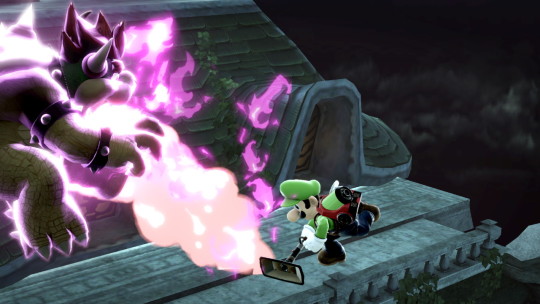
Why this game?
So, the obvious choice people always go with when it comes to Luigi is the Luigi’s Mansion games. Whilst they are definitely on my list and I will get to them down the line, the reason I went for New Super Luigi U in the end, was because Luigi’s overall movements in Smash Bros are closer to his portrayals in the platforming games than the Luigi’s Mansion games. Whilst Luigi in Super Smash Bros Ultimate uses the Poltergust, he has not always had it as part of his moveset, and it still only makes up his Final Smash and grab (which is only one move more than Mario’s F.L.U.D.D. and I doubt most people would say that is the best game to represent Mario overall, even if they love it) I therefore went for this game as it’s one of Luigi’s only starring roles besides the Luigi’s Mansion series and features specific movements which are associated with Luigi such as him being more slippery and jumping higher as well as doing the Scuttle jump. The game also has Luigi taking on Bowser and his army which represents the Super Mario Bros series overall better than the ghosts of Luigi’s Mansion.

My past with this game.
When it comes to this game it can’t really be separated from New Super Mario Bros U. New Super Mario Bros U was a launch title for the Wii U and the fourth in the New Super Mario Bros series. The series overall has had a mixed reception, with not many thinking the games are bad but most of the complaints feeling they’re somewhat generic. Personally, I understand the complaints, but I still enjoy the games and think they’re good games overall. One key element that sadly I’m lacking is that these games can be played in multiplayer, which I’ve only been able to play a few times, so the majority of my experience with the series is single player. Personally, my favourite aspect of the series was seeing them bring back old enemies and redesign them into 3D, which has somewhat solidified how they appear now with enemies such as Buzzy Beetles and Hammer Bros and bosses such as the Koopalings reappearing after a long absence.
When it comes to New Super Mario Bros U specifically, there’s two aspects that probably stand out most in my mind. The first of these are the locations, with them making more of an effort in this game to not have the Mushroom Kingdom look the same as it did in New Super Mario Bros and New Super Mario Bros Wii. The locations in this game such as Acorn Plains are somewhat recognisable, although they’re not the most exciting locations to have appeared in the Mario series. The World Map was the second aspect I always remember, with it working more like the World Map in Super Mario World being one large map you can walk across from world 1 to the final castle. One key aspect to this game which was showing off a new feature of the Wii U was Miiverse, which personally I found a really fun addition, where you could see many different posts by other players for each level. I always liked this feature as it made it feel like you were going on a journey with lots of other people seeing what their experiences are like as you go. With Miiverse shut down now this is no longer possible and as such it was a unique feature to the Wii U game.
New Super Luigi U was what could be called an expansion to the game. It featured the same world map, but every level was replaced with a brand-new level which was meant to be more challenging. Along with this, every level now has a time limit of 100 seconds, meaning they were shorter than those in the original game and you have to focus on getting through them more quickly. There is only one ‘new’ enemy in the game which is a bigger version of a yellow Cheep Cheep, a fish enemy. The rest of the game doesn’t really use new assets so much as using different more challenging setups with those which were in the original game. Overall I’d say this game is similar to the original Super Mario Bros 2 in Japan, which was a more challenging version of the original Super Mario Bros, although with a couple of new features in that case. I played through the original and New Super Luigi U I believe fully getting all three star coins hidden in each stage and beating every level in both, however this was some time ago so I’m not one hundred percent certain if I did or not. I have also gotten New Super Mario Bros Deluxe on Switch, however I have not played through New Super Luigi U on it yet, so my playthrough for this post was on the Wii U version.

My Smash Playthrough.
So, when it comes to my playthrough of this game, it’s very tough to actually go over it. Similarly to other games I’ve covered so far, it was some time ago I did this playthrough, however, one aspect of the New Super Mario Bros series which is often criticised and really doesn’t help me remember, is the game doesn’t really have many memorable moments. There’s the occasional stage which I’d have to retry a few times, but most often it’d be due to me messing up rather than it being particularly hard. The game is definitely tougher than New Super Mario Bros U, but also because of every stage having a time limit of 100 seconds, it means a lot of them are over quick when you do get through them. I think the main memorable aspect of the game is the overall worlds rather than specific stages, with them all being a mixture of foods and standard terrains you’d see in most games. The game starts off at Peach’s Castle, with Luigi, Blue Toad, Yellow Toad and Princess Peach sitting at the table, with oddly Mario’s cap also there, being the only sign of him in this game. Bowser’s Airship along with a squadron of Koopaling Airships arrive and Bowser’s Airship deploys a giant mechanical hand. The hand then moves Peach aside and smashes the other three, scooping them up and throwing them out of the castle, with them landing in a giant Super Acorn Tree, in the first world of the game, Acorn Plains. The three get up and start running back to the castle as Bower’s forces gradually start transforming it. Not exactly a deep story but it’s very rare for Mario games to have that interesting of a plot. The first world is fairly standard, although it introduces the main powerup in this game, the Super Acorn. I quite like the Flying Squirrel form and feel it works well in the game, being unique to previous forms with flight such as the Raccoon Suit and Cape as its movement is linked to the spin mechanic in the New Super Mario Bros series. Beyond the Squirrel form, there’s not a lot of unique features to Acorn Plains beyond the scenery. The aesthetics and theming of the worlds in this game is most likely influenced by Super Mario World in this game, with the food themed locations and the various strange shapes making up the backgrounds throughout the game. Acorn Plains does have one other new feature in this game, Baby Yoshis. Unlike Yoshi, who sadly only appears in specific stages and won’t go with you to other ones, the Baby Yoshi you find on the world map will follow you for as long as you can keep ahold of it, which is somewhat difficult. Baby Yoshi comes in three colours, Pink which when you’re holding it and shake the controller (or press the button in other playstyles) will inflate and allow you to float up a little way, being able to do so a limited number of times before you slowly fall, Blue which shoots bubbles out of it’s mouth which can defeat a lot of enemies, and finally the Yellow shining Baby Yoshi. The Shining Baby Yoshi is only available in specific stages as it’s main job is allowing you to light up dark stages by spinning. All three Baby Yoshis eat most enemies that adult Yoshi can eat. Whilst Baby Yoshis have appeared in a few games, this game was the first time they’d reused the design from Super Mario World in a long time, and the first time this form had appeared in 3D.
Layer-Cake Desert is the next world, which is made up of surprisingly mostly sand themed stages, as well as a fair few underground ones. Some notable features of this world are the first case of a dark underground stage where light is only provided by certain objects such as fireballs from enemies and the fire flowers, as well as glowing Baby Yoshis. Also, of note in this world are the first appearance of Spikes, who can be irritating but aren’t too difficult to defeat as long as you watch out for the iron balls they roll. Next up is a branch, where you can choose which world to take on next. Despite me not going for 100% in this playthrough I believe, I beat both worlds, and I have every time, so I’m not entirely certain if you can carry on without doing the other world or have to beat both options before being able to go on to world 5. I’m fairly sure I have always gone for the same world first each time, being Frosted Glacier, so I most likely did again in this playthrough. Frosted Glacier has some really nice looking stages, with a lot of starry skies, and a nice atmosphere. The only problem of course, is in a game with Luigi slipping more than usual, you now have ice physics to deal with. I believe I didn’t have an awful amount of trouble with this however, as often there’s plenty of room so it’s rare to slip and fall into pits in my experience as long as you’re careful. The first ghost house also appears in this world, I don’t tend to remember specific ghost houses in most games until I get to them, so I can’t say which ghost house is from which world, but with the strict time limit, having to solve puzzles I think could take me a couple of tries, however it was nothing I remember being irritatingly tough. Sparkling Waters is the other option and the one I usually go with second. As you can likely guess from the name, it’s a water based world, however what’s interesting is there’s only two underwater stages in it, with the rest being more beach themed stages with a small amount of water at the bottom. Probably the first stage that I noticed being somewhat unique in this game compared to New Super Mario Bros U is in this world, with a beach stage featuring various beach huts and Huckit Crabs, which throw rocks. The other stage of note in this world is the ghost ship, which is a mix of a ghost house and a beach stage with water running along the bottom and Boo enemies.
Following these worlds is the first encounter with Bowser’s main airship which involves a battle with Bowser Jr. I’ll cover the boss battles later, but this is probably the only standard airship level in the game as the other one differs somewhat. I’ve always been a fan of the airships in Mario and so despite it being an auto-scrolling level I quite like this one. Past this is Soda Jungle, which has a few unique features. This world starts off with jungle themed stages with poisonous water that kills you if you fall in, and can be quite irritating. It also features Giant enemies for the first time. The Haunted Forest section of the world has one of the most interesting looking stages in the game, which is a stage where all the backgrounds look like painted artwork along with painted pipes that move a lot. I do remember having to play this level a few times, so I was glad it had an interesting look to it rather than just being another jungle stage. Finally, after leaving the Haunted section comes a couple more jungle stages, with them both featuring some unique mechanics, one of the stages requiring you to bounce off of giant Wiggler enemies (caterpillars that are an enemy that first appears in this world) and not touch the poison water. The second is a stage which features enemies that only appeared in one stage in New Super Mario Bros U, being Sumo Bros. What I found cool was that these enemies hadn’t appeared in a game in years so I was glad to see them in 3D for the first time. They can be very tricky though, stomping on platforms above to make lighting drop down. Rock Candy Mines is the next world, which features many mountain and underground themed stages which are fairly challenging. I can’t really pick out stages that stood out particularly in this world however. Next up, and the final of the standard worlds in the game is Meringue Clouds. I’d like to note that I have always been a big fan of sky-based locations, with cities in the clouds being some of my favourite settings, so I enjoyed this world. Probably one of the more notable stages on it is the Rainbow Skywalk, which features you travelling through various rainbow corridors with Bullet Bills firing and Waddlewings flying at you.
Before tackling the final world, I’d like to make a mention of the boss battles. They’re often seen as the weakest aspect of the game I believe, and I can understand why, however personally I quite enjoy them. Boom Boom is the miniboss of most worlds, with him receiving various changes each time from Kamek, including forms such as being able to spin jump, growing giant and gaining wings amongst other abilities. The Koopalings are fairly different in this game to their last appearance in New Super Mario Bros Wii, being only fought once in each world and having different features to their fights. They’re still beaten the same way mostly however being jumped on three times when not hidden in their shells. These battles I believe are no different in New Super Luigi U to the base game, with the main difference being Luigi’s different movement in this game and the shorter time limit. The bosses are fairly simple with only a couple making me have to try more than once against them. The final Airship stage follows Meringue Clouds and features the giant hand seen on the airship in the introduction. It causes crushing damage so can kill you instantly even if you’ve got a full powerup, so it’s important to always find somewhere to hide from it. The auto-scroll nature of the stage can make this somewhat irritating but it’s not too difficult and is followed up by a Bowser Jr boss fight. The first Bowser Jr fight earlier in the game had you swimming and trying to get his homing Torpedo Teds he’d fire to instead hit him, which wasn’t tough but could take a bit of time and I believe I had to try more than once. This second boss battle can be fairly irritating, with it requiring you to jump on his head when he’s low enough. However, what’s dangerous in this battle is Bowser Jr can break the floor you’re standing on, meaning a mistake can cause you to fall fairly easily. Following this battle, the Airship is taken down and its on to the final world, Peach’s Castle which has been transformed by Kamek.
Peach’s Castle features all lava stages, with many features seen in the castles you’ve been through such as Podoboos and Magmaws coming out of the lava to cause you trouble. Somewhat more unique to these stages are the poisonous gas cloud that follows in some stages, although due to the time limit you’re unlikely to wait long enough for it to catch up to you anyway, and meteors which fall from the sky and often destroy platforms they land on (as well as you if you’re not careful). Probably the my biggest complaint for this world in both NSBMU and NSLU is that, beyond Peach’s Castle being viewable in the background in some of the stages, none of the stages really look that different to typical Bowser’s Castle stages, and given the history of Peach’s Castle with Super Mario 64 having the whole game take place in it as a hub world, it would have been cool to see more of the concept of that location transformed into a lava filled fortress. The final stage isn’t that different from the one in New Super Mario Bros U, with Bowser Jr in his Clown Car flying above you and ground pounding on you every so often. It’s a somewhat irritating stage due to this, with him often throwing you off or knocking you stunned into the lava. At the end of the stage comes the final battle with Bowser… which is once again a recreation of his battle in the original Super Mario Bros. Run under him when he jumps and hit the switch to collapse the bridge under him. There is more to this, but given the last three NSMB games did this setup before the real final boss, I really wish they could have done something else here. Super Mario Bros 3 had a fun Bowser fight, they could have easily done a recreation of that if they wanted. It’s funny because due to this same boss fight being in the NSMB series multiple times, it makes Bowser in his ‘base form’ so to speak seem like a complete joke which Mario and Luigi can take down with ease at this point.
So, as you can imagine, Bowser falls, and Kamek appears to once again use his magic on him, just like in previous NSMB games. This time, instead of running from a giant Bowser like in New Super Mario Bros Wii, the giant Bowser confronts you on the roof, with Bowser Jr in his clown car helping him. This is a somewhat cool battle, as you must dodge Bowser Jr’s ground pounds, jump on him to knock him out of the Clown Car and pilot it above the giant Bowser, before ground pounding with it down onto his head. It’s a fairly fun battle although not particularly hard, you will probably have to try it once or twice though but for how many lives you have at this point it won’t matter much. Following his defeat Bowser falls with Jr jumping after him (I’d imagine landing on top of Bowser rather than to his doom but I’ll let you be the judge of that) and Luigi goes to see Peach, gets a kiss and the same ending as New Super Mario Bros U plays out. Usually I go over my feelings on the ending, with the credits music and other things, but there’s not really much to say for this one, it’s another playable ending screen which is nice but it’s nothing really special. The music’s nice enough for it but New Super Mario Bros as a series has not had a lot of music that really sticks out to me. I don’t find it bad music, it does its purpose, but it’s not something I’ll really think of outside of the game usually, with only the occasional track that I’ll listen to. So for the game overall, I think it benefits from it’s focus on being a challenge for those who played the first game rather than a sequel, and for Luigi’s first non-Mansion or Educational starring role it’s not a bad one.
Specific aspects about the game relating to Luigi in Smash.
So, when it comes to Luigi’s moves in this game, there isn’t a lot to go over. Luigi can use fireballs when he’s in his Fire Luigi form similarly to his Neutral B in Smash Bros, he can also do spins in this game, similar to his Down B. Apart from that however, most of the similarities come down to movement, with Luigi’s physics in comparison to Mario’s being similar to the differences between them in Smash, and Luigi having his Scuttle Jump. Other than that, most of Luigi’s moves in Smash have a somewhat interesting origin, with a lot of his attacks being based on Mario’s which came from Super Mario 64, a game Luigi famously wasn’t in. What’s interesting is years later Super Mario 64 DS would release with Luigi playable, being able to do the same attacks as Mario, so in a sense it could be said to be based on his Smash moves rather than the other way around in this case. (Although, in reality it’s simply because all characters besides Yoshi have the same punching and kicking moves). Overall, despite this being the game I chose for Luigi, the closest playable appearance for him to his Smash Bros appearance is in Super Mario 64 DS. Finally, as it is an important aspect of him, I will cover Luigi’s Poltergust down the line as an alternate costume in a sense with a play through of Luigi’s Mansion Dark Moon, and then Luigi’s Mansion 3.
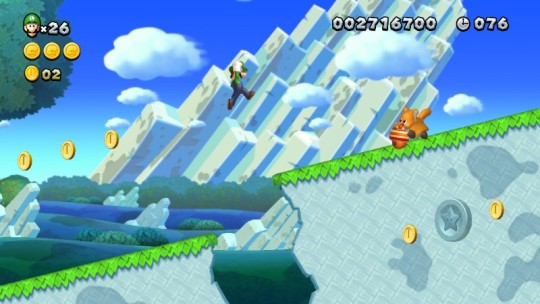
Credits.
For information on this game including dates of releases I must give credit to Mario Wiki.
The screenshots in this post are taken by me using Miiverse before it shut down.
#Luigi#New Super Luigi U#super smash bros#Wii U#Nintendo Switch#My Smash Playthrough#My Smash Playthroughs
5 notes
·
View notes
Text
Video Games
Today, video games make up a $100 billion global industry, and nearly two-thirds of American homes have household members who play video games regularly. And it’s really no wonder: Video games have been around for decades and span the gamut of platforms, from arcade systems, to home consoles, to handheld consoles and mobile devices. They’re also often at the forefront of computer technology.

The Early Days
Though video games are found today in homes worldwide, they actually got their start in the research labs of scientists.
In 1952, for instance, British professor A.S. Douglas created OXO, also known as noughts and crosses or a tic-tac-toe, as part of his doctoral dissertation at the University of Cambridge. And in 1958, William Higinbotham created Tennis for Two on a large analog computer and connected oscilloscope screen for the annual visitor’s day at the Brookhaven National Laboratory in Upton, New York.
In 1962, Steve Russell at the Massachusetts Institute of Technology invented Spacewar!, a computer-based space combat video game for the PDP-1 (Programmed Data Processor-1), then a cutting-edge computer mostly found at universities. It was the first video game that could be played on multiple computer installations.
In 1967, developers at Sanders Associates, Inc., led by Ralph Baer, invented a prototype multiplayer, multi-program video game system that could be played on a television. It was known as “The Brown Box.”
Baer, who’s sometimes referred to as Father of Video Games, licensed his device to Magnavox, which sold the system to consumers as the Odyssey, the first video game home console, in 1972. Over the next few years, the primitive Odyssey console would commercially fizzle and die out.
Yet, one of the Odyssey’s 28 games was the inspiration for Atari’s Pong, the first arcade video game, which the company released in 1972. In 1975, Atari released a home version of Pong, which was as successful as its arcade counterpart.
Magnavox, along with Sanders Associates, would eventually sue Atari for copyright infringement. Atari settled and became an Odyssey licensee; over the next 20 years, Magnavox went on to win more than $100 million in copyright lawsuits related to the Odyssey and its video game patents.
In 1977, Atari released the Atari 2600 (also known as the Video Computer System), a home console that featured joysticks and interchangeable game cartridges that played multi-colored games, effectively kicking off the second generation of the video game consoles.
The video game industry had a few notable milestones in the late 1970s and early 1980s.
The Video Game Crash
In 1983, the North American video game industry experienced a major “crash” due to a number of factors, including an oversaturated game console market, competition from computer gaming, and a surplus of over-hyped, low-quality games, such as the infamous E.T., an Atari game based on the eponymous movie and often considered the worst game ever created.
The video game home industry began to recover in 1985 when the Nintendo Entertainment System (NES), called Famicom in Japan, came to the United States. The NES had improved 8-bit graphics, colors, sound and gameplay over previous consoles.
Nintendo, a Japanese company that began as a playing card manufacturer in 1889, released a number of important video game franchises still around today, such as Super Mario Bros., The Legend of Zelda, and Metroid.
Also in 1989, Sega released its 16-bit Genesis console in North America as a successor to its 1986 Sega Master System, which failed to adequately compete against the NES.
With its technological superiority to the NES, clever marketing, and the 1991 release of the Sonic the Hedgehog game, the Genesis made significant headway against its older rival. In 1991, Nintendo released its 16-bit Super NES console in North America, launching the first real “console war.”
The early- to mid-1990s saw the release of a wealth of popular games on both consoles, including new franchises such as Street Fighter II and Mortal Kombat, a fighting game that depicted blood and gore on the Genesis version of the game.
The Rise of 3D Gaming
With a leap in computer technology, the fifth generation of video games ushered in the three-dimensional era of gaming.
In 1995, Sega released in North America its Saturn system, the first 32-bit console that played games on CDs rather than cartridges, five months ahead of schedule. This move was to beat Sony’s first foray into video games, the Playstation, which sold for $100 less than the Saturn when it launched later that year. The following year, Nintendo released its cartridge-based 64-bit system, the Nintendo 64.
Though Sega and Nintendo each released their fair share of highly-rated, on-brand 3D titles, such as Virtua Fighter on the Saturn and Super Mario 64 on the Nintendo 64, the established video game companies couldn’t compete with Sony’s strong third-party support, which helped the Playstation secure numerous exclusive titles.
Modern Gaming
The 8th and current generation of video games began with the release of Nintendo’s Wii U in 2012, followed by the Playstation 4 and Xbox One in 2013. Despite featuring a touch screen remote control that allowed off-TV gaming and being able to play Wii games, the Wii U was a commercial failure—the opposite of its competition—and was discontinued in 2017.
In 2016, Sony released a more powerful version of its console, called the Playstation 4 Pro, the first console capable of 4K video output. In early 2017, Nintendo released its Wii U successor, the Nintendo Switch, the only system to allow both television-based and handheld gaming. Microsoft will release its 4K-ready console, the Xbox One X, in late 2017.
With their new revamped consoles, both Sony and Microsoft currently have their sights set on virtual reality gaming, a technology that has the potential to change the way players experience video games.
0 notes
Text
Animal Crossing - Part 2


From https://docs.google.com/spreadsheets/d/13sRAcj9YbP9_i-u0Kg6S7ycHbaOQx1jFG4lYLm2DJ4c/edit

from https://nookipedia.com/wiki/Item:IQueGBA_(D%C3%B2ngw%C3%B9_S%C4%93nl%C3%ADn)
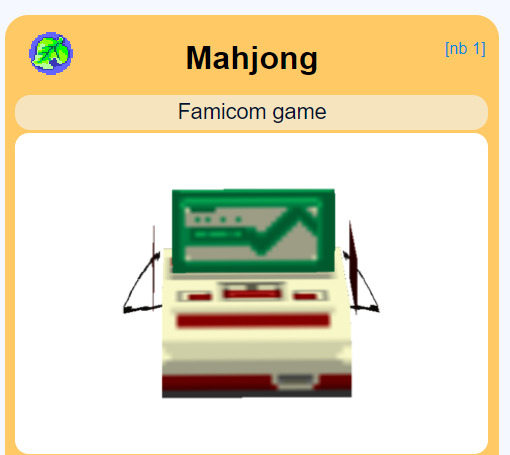


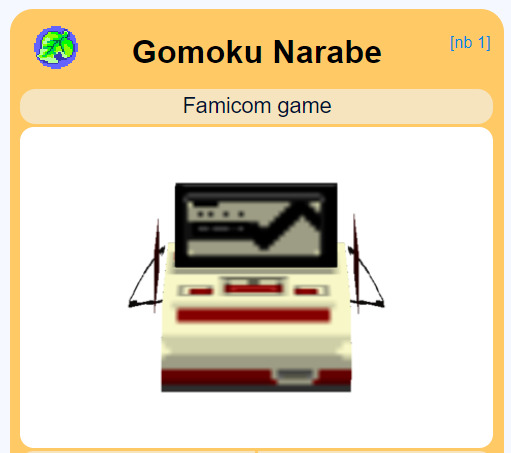

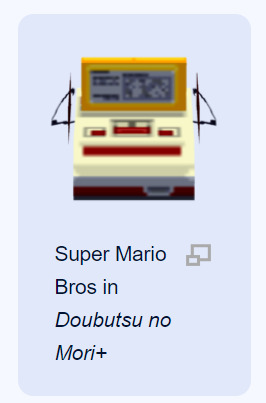
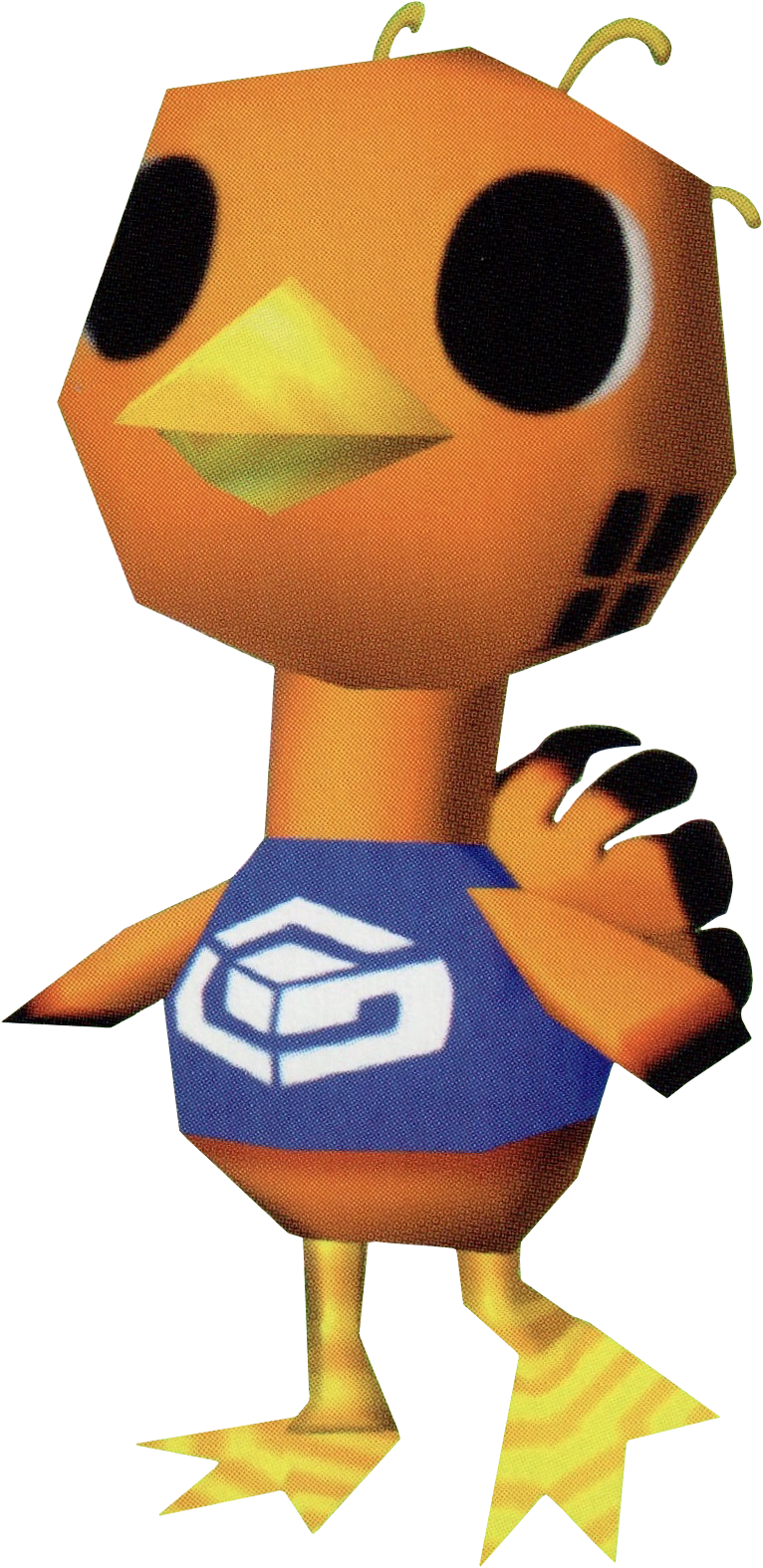
All from https://nookipedia.com/
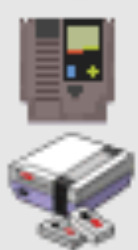

from https://www.spriters-resource.com/fullview/23441/
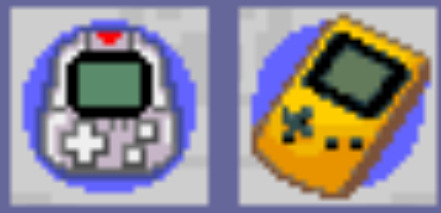
from https://www.spriters-resource.com/fullview/109190/

from https://nookipedia.com/wiki/Item:Game_console_shirt_(D%C3%B2ngw%C3%B9_S%C4%93nl%C3%ADn)
#Animal Crossing#Depicted by: Nintendo 64#Depicted by: Nintendo GameCube#Depicting: Famicom#Depicting: Famicom Cartridge (generic)#Depicting: Nintendo Entertainment System#Depicting: Nintendo Entertainment System controller#Depicting: iQueGBA#Depicting: Mahjong Famicom Cartridge#Depicting: The Legend of Zelda NES Game Box#Depicting: Famicom Disk System#Depicting: Gomoku Narabe Famicom Cartridge#Depicting: Super Mario Bros NES Box#Depicting: Super Mario Bros Famicom Cartridge#Depicting: Derivative#Derivative: Nintendo GameCube#Depicting: Nintendo Entertainment System Game Pak (generic)#Depicting: Pokémon Pikachu 2 GS#Depicting: Game Boy Color#Depicting: iQue Player
0 notes
Text
How Double Dragon’s Abobo Became a Beat em up Legend
https://ift.tt/2F8DPGk
In the late ’80s, video games started featuring over-the-top, meaty musclemen. Metro City had Mike Haggar, a shirtless former wrestler who became mayor and decided that being “tough on crime” meant ridding the streets of criminals with his bare hands, his girlfriend’s psycho boyfriend, and a ninja in Nikes. Circus strongman Karnov scoured the world for adventure and treasure, fighting all kinds of mythical monsters. Bald Bull was trying to dominate both the boxing ring and the arm-wrestling circuit. Gutsman was a jacked construction robot who was later rebuilt as a 40-foot-tall tank centaur.
And then there was Abobo, the gigantic antagonist from Double Dragon. He wasn’t THE antagonist. Hell, in the first game, you fight him within the first two minutes. Despite his low-level status, he’s still far more fondly remembered than the main Double Dragon bad guys like Willy and the Shadow Master. There’s just always been something about this random brute that’s made him special.
Abobo’s journey begins in the original Double Dragon, Technos’ 1987 arcade hit. The game’s story is very simple. A dystopian, lawless, post-nuclear war version of New York City has been overrun by a gang called the Black Warriors or Shadow Warriors or Black Shadow Warriors. (They kind of workshop that name from game to game.) Billy and Jimmy Lee are two martial arts brothers whose mutual friend Marian is captured by gang members. Off they go to lay out everyone in that gang with their bare fists and occasional barrel/whip/knife/baseball bat.
While the cannon fodder is mostly made up of normal-sized guys, out walks Abobo, who makes his entrance by punching his way through a brick wall. From the moment he appears on screen, it’s clear Abobo is meant to stand apart from the rest. He has longer reach, takes more hits, can’t be thrown, and is able to throw Billy and Jimmy like ragdolls. The only guy more dangerous than Abobo is Willy, the final boss, who brings a machine gun to a fist fight.
Weirdly, Abobo has various forms in the game. His initial form is as a bald, pale guy with a mustache. Soon after, we fight Jick, an Abobo clone who closely resembles Mr. T. Later, we face off against an Incredible Hulk version of Abobo. This is post-nuclear war, so I suppose this tracks.
But it was NES port that really delivered the ultimate form of Abobo, whose appearance was seriously altered for the 8-bit console. With orange-brown skin, Abobo is still bigger than everyone else, but also looks inhuman. He has a giant, bald head almost the size of his bulky torso, and a black arch on his face that is apparently a mustache merged with a frown! While the NES version had its own quasi-fighting game mode with everyone redrawn with a bigger and better sprite, Abobo looked exactly the same. You just can’t mess with perfection!
Abobo sort-of-but-not-really appeared in the sequel, 1988’s Double Dragon II: The Revenge. In a game filled with giant enemies, there was a guy named Bolo who looked exactly like Abobo, but with long, black hair. Actually, in retrospect, he looks a lot like Danny Trejo.
Huh.
Abobo sat out of the next few Double Dragon games, as the Lee brothers busied themselves fighting mummies and chubby clowns. But he returned in a very unexpected crossover: 1993’s Battletoads/Double Dragon: The Ultimate Team. The game featured a bizarre team-up between the Dark Queen from Battletoads and the Shadow Warriors. As Double Dragon didn’t have too many memorable boss characters that could stack up to the likes of a giant rat in a singlet, they went with what they could get.
As with the other bosses in the crossover gamer, Abobo was depicted as an absolute giant compared to the Lee Brothers and the Toads. He was also very generic-looking, appearing as a shirtless, bald guy with no ‘stache. Due to the sci-fi nature of the crossover, his storyline ended with him getting booted off a spaceship and sent spiraling through space itself.
1993 also gave us the Double Dragon animated series. Somehow, this thing ran for two seasons (26 episodes) and Abobo was there from the beginning. The first episode was a weird Saturday morning-style retelling of the NES game’s plot, down to Billy Lee having to fight his “evil” brother at the end. Abobo acted as a henchman, alongside a very colorful take on Willy.
In the cartoon, Abobo was a bald muscleman with blue skin, meaning he has the same mysterious complexion situation as Captain N’s King Hippo. Abobo was also strangely competent on the show, all things considered, although the only fighting he ever did was throw oil drums at Billy and miss every single time. He spent more of his time annoyed at Willy, who was depicted as a psychotic cowboy with a laser gun — one-half Yosemite Sam and one-half the Interrupter from Late Night with Conan O’Brien.
The second episode introduced the Shadow Master, who immediately showed disgust at his underlings’ failure by magically bonding Willy to a giant mural of punished souls. Abobo tried to run for it, but succumbed to the same fate. The two would remain in that mural for the rest of the series.
While there was a fighting game released based off of the Double Dragon cartoon, Abobo wasn’t part of the roster. It was just as well. Double Dragon V: The Shadow Falls was a really bad game and Abobo had bigger things on the horizon.
Abobo was about to go Hollywood!
In 1994, Imperial Entertainment Group released the Double Dragon movie, a total cheesefest that couldn’t make back its $8 million budget. But Robert Patrick’s scenery-chewing main villain made the movie almost watchable. The story takes place in a version of Los Angeles that’s a cross between The Warriors and No Man’s Land from the Batman comics. Billy and Jimmy are teens who get roped into a plot that involves two dragon-shaped necklaces that form an all-power medallion when put together.
Initially, Nils Allen Stewart plays the gang leader Bo Abobo. As head of the Mohawk Gang, he’s there to act all intimidating in a goofy ’90s bully sort of way, but he really doesn’t actually do much. He takes part in a car chase and teases a fight scene, but nothing happens.
Then, the villain Koga Shuko transforms him into a literal steroid freak with some experimental machine. From there on out, Abobo is played by Henry Kingi in a bloated, rubber suit. Despite being a muscle golem at this point, Abobo STILL doesn’t actually fight anyone and is instead kidnapped by Power Corps.
Abobo eventually sees what he looks like in the mirror. Broken over what he’s been transformed into, he turns on Koga and…still doesn’t fight anyone. He just gives Power Corps some advice to help turn the tide against the bad guys. At the end of the movie, he asks the Lee Brothers if they could be buddies and recklessly drives their car.
Yeah, it’s…almost something. Not the awfulness of Super Mario Bros, but not the good-for-the-time quality of Mortal Kombat. It’s also not quite as fun-bad as the Street Fighter movie, but it does share one major similarity to it.
Much like Street Fighter, the Double Dragon movie had its own fighting game spinoff. Rather than a one-on-one fighter featuring digitized actors (which was the original idea until it wasn’t deemed viable for the deadline), Technos put together a Neo Geo animated fighter that isn’t so well-known these days due to how run-of-the-mill it was. It looked like your average SNK fighting game, with no real identity of its own. The game was released for arcade, Neo Geo CD, and PlayStation.
The 1995 fighting game was loosely based on the movie’s plot and featured some FMV clips. Showing up from the movie are Billy Lee, Jimmy Lee, Marian, Shuko, and Abobo. The rest of the roster is made up of original characters, though Technos did redesign Burnov, the Big Van Vader-looking boss character from Double Dragon II: The Revenge. Abobo more closely resembles his initial, more human-looking form from the movie, complete with mohawk, although he’s cartoonishly big in the game. Fortunately, he occasionally transforms into his blobby, tumor-like mutant form during certain moves and winposes.
His ending in the game features him eating a lot of meat at a restaurant, demanding to eat meat so rough that it’ll make his teeth bleed. Heh. And Roger Ebert said video games aren’t art.
Read more
Games
Double Dragon and Kunio-kun: Retro Bundle Coming Soon
By Rob Leane
Games
Double Dragon 4: Story & Multiplayer Modes Detailed
By Matthew Byrd
After the inexplicable crossover, animated series, failed movie, and fighting game tie-ins, Double Dragon as a franchise was finally spent. As the arcade scene died down in the late ’90s, the side-scrolling beat ‘em up disappeared for a time, and it would be a little while before nostalgia for it would kick in.
Fortunately, there was still some juice left in the fighting game genre, and in 2002 the Neo Geo had just enough time left before SNK’s hardware line was discontinued. The company Evoga developed what was, for a time, meant to be a Double Dragon fighting game, but ultimately the team wasn’t able to secure the rights and was forced to make the game with a knockoff cast of characters. The result was Rage of the Dragons, a tag-team fighting game featuring Billy Lewis, Jimmy Lewis, and Abubo…
Abubo does not have a tag partner and is instead a mid-boss so powerful that it takes two opponents to stop him. He’s depicted as a low-level mob boss with a ponytail, sunglasses, pink tank top, and overly-long, muscular arms. It’s a decent enough redesign of the original, but…Abubo? That’s the best they could come up with?
As for the official Double Dragon, it made its comeback a year later. Double Dragon Advance for the Game Boy Advance took the original arcade version, updated the graphics just enough, added more stages, enemies, and attacks, turning this installment into a souped-up take on the classic. This of course meant the return of the real Abobo!
2012 would be a banner year for the musclebound henchman. Since 2002, I-Mockery’s Roger Barr had been trying to develop an Abobo-based fangame, and in early 2012, the free-to-play masterpiece Abobo’s Big Adventure was released to the public and we were better for it.
Using 8-bit graphics, the game follows Abobo as he searches for his kidnapped son Aboboy. Each level is based on a different NES title and features a dizzying amount of Easter eggs. There’s a Double Dragon level, underwater Super Mario Bros. level, Urban Champ, Legend of Zelda, Balloon Fight, Pro Wrestling, Mega Man, Contra, and finally Punch-Out. The game is an absolute blast, especially for anyone who grew up with the NES and features such whacked out moments as:
Abobo mating with the mermaid from Goonies 2, which gives him a forcefield powerup made up of Abobo/mermaid hybrid babies, one of which begs for death!
An Abobo vs. Amazon wrestling match that includes the summoning of Hulk Hogan, Ultimate Warrior, Roddy Piper, and Undertaker assists in the form of Pro Wrestling sprites.
Taking on Krang’s giant robot body with Kirby in the abdominal area.
An incredibly long and over-the-top ending that gets extremely and laughably violent. If you’ve ever wanted to see a muscular child drink blood from the Shredder’s dismembered arm, this game is for you!
In terms of OFFICIAL nostalgia, 2012 also saw the release of Double Dragon Neon for the PlayStation 3 and Xbox 360 (and later PC). Using 3D graphics, the game was a modern update of Double Dragon’s playstyle while playing up the 1980s aesthetic. It was a lot more ridiculous than the original series. In fact, it’s more in line with the Battletoads crossover since this game also lets you launch Abobo into the deep recesses of outer space to die.
This game also gave us the first – and, as of this writing, only – polygon Abobo. This time a towering, hunched over brute with lots of spiked armbands. All that AND the mustache!
But of those two 2012 releases, Abobo’s Big Adventure is surprisingly the better game in terms of its portrayal of the big man, as it solidified his status as nostalgic beat em up icon.
In 2017, Arc System Works put together Double Dragon IV for the PlayStation 4, Xbox One, Nintendo Switch, and PC. Rather than emulate the arcade original’s aesthetic, the game took its art style from the NES games. That meant the return of the classic NES Abobo as not only a recurring enemy but an unlockable playable character. Double Dragon IV actually lets you play through the story mode as various enemy characters, but honestly, who else would you pick in that situation? Well, maybe Burnov.
Sadly, playing as Abobo in Double Dragon IV leads to a non-ending. I know you can’t improve on “Abobo punches Little Mac’s head off so hard it transcends time and space,” but at least TRY!
Around the same time, another game tried to play up Abobo’s ironic/iconic status. River City Ransom: Underground was released for the PC in early 2017. The River City Ransom series has always had ties to Double Dragon, but this high school brawler goes the extra mile by putting Abobo on a big pedestal. First off, he’s the school principal. If you attack any of your teachers, you’re sent to Principal Abobo’s office to suffer a serious slap on the wrist, shoulder, jaw, spine, etc. Sometimes he’ll even enter classrooms by punching holes through the brick walls, all while shirtless and talking like the Hulk.
Even better than that? Abobo’s not only the school principal but the Mayor of River City! No wonder everyone’s always kicking the shit out of each other! God bless Mayor Mike Haggar for being a true trendsetter.
The Double Dragon/River City connection only grew stronger when 2019 brought the absolutely must-play River City Girls. As the story goes, River City Ransom heroes Kunio and Riki have been kidnapped, so their badass girlfriends Misako and Kyoko go on a violent rampage to save them. Early in the game, while Misako and Kyoko fighting in a classroom, there’s a projector playing a short film about a boy learning about puberty.
It just so happens that the kid in the video is being taught by Abobo, who thanks puberty for his monstrous size and strength. This, my friends, is foreshadowing, as Abobo shows up later in the game as a boss.
Misako and Kyoko confront Abobo about their missing boyfriends, and Abobo admits that he isn’t sure whether or not he kidnapped them since he kidnaps a LOT of people. They throw down and we’re treated to the most powerful take on Abobo yet, considering the length of his life bar. Once defeated, Abobo admits that he has nothing to do with the missing boyfriends, but gives the heroes a lead by talking about his side job as security for an upcoming concert.
In 2020, Arc System Works released a collection for PS4 and Switch called Double Dragon & Kunio-Kun Retro Brawler Bundle. It collects 18 8-bit games, including the three NES Double Dragon games, River City Ransom, and all the old spinoffs from the River City Ransom universe. And who’s on the cover?
Yes, despite technically being in one game out of 18, and not even being the final boss of any of them, Abobo gets a major spot on the cover of this huge collection among the games’ hero characters. Finally, the world understands that Abobo is a star. Now we just need Abobo to appear in Guilty Gear Strive and then we’ll really be cooking.
The post How Double Dragon’s Abobo Became a Beat em up Legend appeared first on Den of Geek.
from Den of Geek https://ift.tt/2Gl5jJ9
3 notes
·
View notes